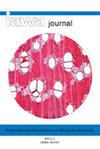The functional significance of tracheids co-occurring with vessels in xylem of Eudicots suggests a role in embolism tolerance
IF 3.5
3区 农林科学
Q2 FORESTRY
引用次数: 3
Abstract
One of Sherwin Carlquist’s greatest scientific legacies is how far he advanced our understanding of the structural and functional relationships within the xylem. His research was critical in illuminating the occurrence and importance of tracheids co-occurring with vessels in the xylem of some eudicots. Here, we highlight key concepts and findings from his work on these topics, and how testing has advanced with the advent of recent methods that produce spatially explicit data on embolism formation. There are three classifications of tracheids within vessel-bearing xylem: vasicentric, true, and vascular. Carlquist viewed tracheids as critical in safely transporting water. We review the literature on tracheid function, focusing on transport safety and efficiency, and discuss how the presence of tracheids might affect other xylem traits in the context of tradeoffs. Available data indicate that Carlquist was correct in his view that tracheids are resistant to embolism, and they contribute to the safe transport of sap. Tracheids provide connections (bridges) among vessels that remain sap-filled within highly embolized vessel networks and, in this role, they promote embolism tolerance. There is still much to learn, and integrating tracheids into models of sap flow, understanding their pit traits and connections, and how they affect xylem functional tradeoffs will transform our understanding of plant sap transport. Diverse xylem structural arrangements suggest many potential ways for xylem networks to function. In species containing both vessels and tracheids, the hydraulic network appears to be able to tolerate high levels of vessel embolism within seasonal environments.管胞与木质部血管共存的功能意义提示了其在栓塞耐受中的作用
Sherwin Carlquist最伟大的科学遗产之一是他在多大程度上推动了我们对木质部结构和功能关系的理解。他的研究对于阐明某些真双子叶植物木质部中管胞与导管共存的发生和重要性至关重要。在这里,我们强调了他在这些主题上的工作中的关键概念和发现,以及随着最近产生栓塞形成空间显式数据的方法的出现,测试是如何取得进展的。导管木质部内的管胞有三种分类:脑室管胞、真管胞和维管胞。Carlquist认为管胞在安全运输水方面至关重要。我们回顾了有关管胞功能的文献,重点是运输安全性和效率,并讨论了管胞的存在如何在权衡的背景下影响其他木质部性状。现有数据表明,Carlquist的观点是正确的,即管胞对栓塞有抵抗力,它们有助于树液的安全运输。管胞菌在高度栓塞的血管网络中提供血管之间的连接(桥梁),并在这一作用下促进栓塞耐受性。还有很多东西需要学习,将管胞整合到树液流动模型中,了解它们的坑特征和连接,以及它们如何影响木质部功能权衡,将改变我们对植物树液运输的理解。木质部结构的多样性为木质部网络的功能提供了许多潜在的途径。在同时含有血管和管胞的物种中,水力网络似乎能够在季节性环境中耐受高水平的血管栓塞。
本文章由计算机程序翻译,如有差异,请以英文原文为准。
求助全文
约1分钟内获得全文
求助全文
来源期刊

IAWA Journal
农林科学-林学
CiteScore
3.40
自引率
15.80%
发文量
26
审稿时长
>36 weeks
期刊介绍:
The IAWA Journal is the only international periodical fully devoted to structure, function, identification and utilisation of wood and bark in trees, shrubs, lianas, palms, bamboo and herbs. Many papers are of a multidisciplinary nature, linking
 求助内容:
求助内容: 应助结果提醒方式:
应助结果提醒方式:


